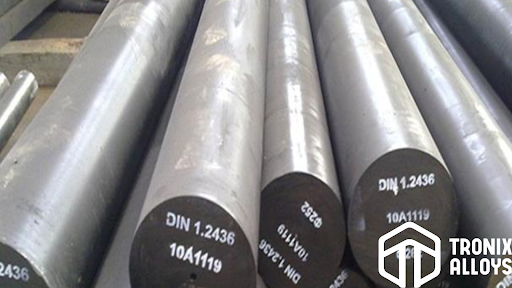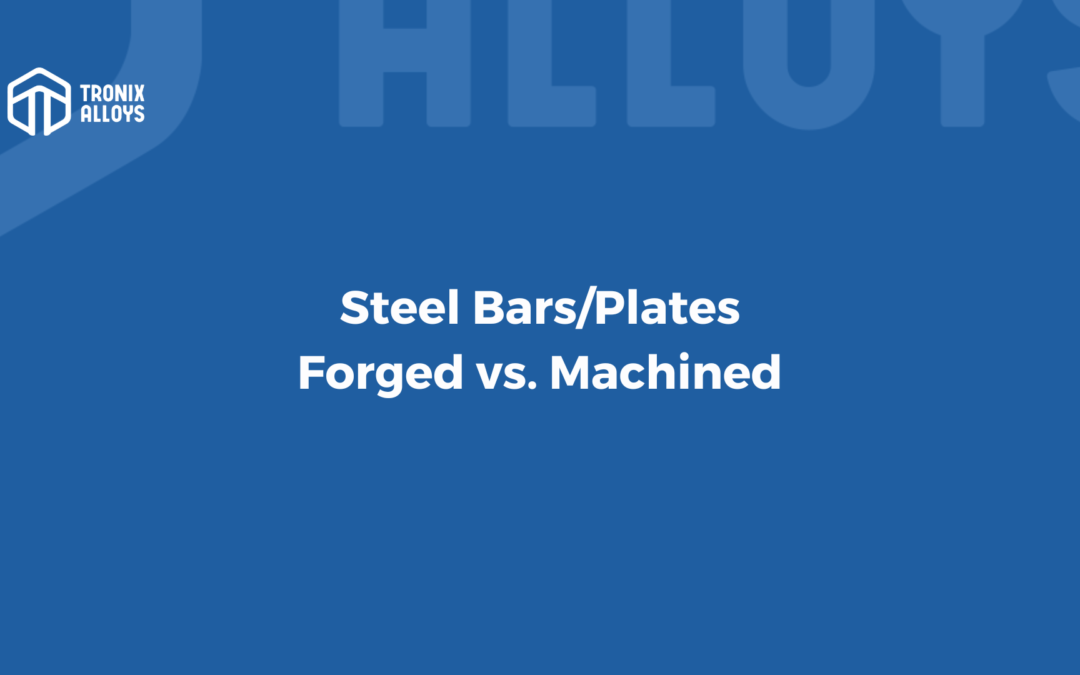
What is a forge?
A forge is a large hearth that has a center hole from which the smith can fire a lamp, or it can be a place where a forge is located which can heat a piece of metal to a temperature at which it becomes easier to shape by forging, or at which work hardening does not occur anymore if it is heated to a specific temperature.
In terms of size range, grain orientation strength, material use, scrap and production, and the requirement for secondary operations, machined steel bar and plate are compared and contrasted with forging – in terms of size range, grain orientation strength, and material use.
The size range of the desired material grades is as follows:
Steel bars and plates can be manufactured in many different shapes and sizes depending on the dimensions that these materials are supplied in. Forging is often the only metalworking option available with certain grades of steel and within desired sizes when it comes to steel bar and plate. A wide range of sizes of forgings can be economically produced – from parts that do not exceed 1 in in diameter to parts that have a diameter of a few millimeters. Parts that weigh more than four hundred fifty thousand pounds will also be considered.
Strength of grain orientation:
Compared to forging, machining yields a grain structure oriented to the part shape, resulting in optimum strength, ductility, and resistance to fatigue and impact, while machining cuts the grain pattern of the material. Forging yields a grain structure oriented to the part shape, and thus produces the highest strength, ductility, and fatigue resistance.
Economical use of materials:
There are several fabricating processes that are wasteful, such as flame cutting plate, which is one of several steps involved in the manufacture of a hub or a ring that requires more material than needed to make. Often times, the material cost savings are substantial, depending on whether aluminium forging, steel forge or special alloys are used. It benefits both to save on material losses in subsequent machining.
Production cost-effectiveness and scrap rate:
Steel bar and plate machining generates a lot of waste material due to the inherent nature of the machining process, so the rate of scrap is always high and the cost is always reduced. Improved material utilization, especially for near net shape forgings, results in less scrap being generated. Forgings have a decisive advantage when it comes to cost in high-volume production runs of parts.
Requirement for secondary operations:
In some grades of bar and plate, additional operations are required to remove surface imperfections, create machinability, ensure dimensional accuracy and make sure the bars and plates are strong and strong, for example by turning, grinding and polishing. In most cases, forgings can be used without the need for costly secondary operations.
Material Strength :
It is necessary to machine the plate steel in order to shape it or to cut it down to the required size when using plate steel. The grain structure of the steel is then sliced by this, making the material weaker, more prone to corrosion, and more susceptible to wear and tear. The grain structure of the steel can be oriented according to the shape of the part when it is forged, making it extremely strong as a result.
Use of Materials :

Steel plate is commonly used to make parts that need to be flame-cut for use in the woodworking process, so flame cutting is usually required. The steel plate is usually sized once it has been cut to size, then it is usually machined further to make it suitable for delivery to the customer once the plate has been cut to size. A large amount of material is wasted as a result of this practice.
Finishing Options :
In order to remove imperfections and irregularities from steel plate material, additional finishing is often required, such as grinding, polishing, or turning. Unlike forged bar stock parts, forgings do not require any machining and are ready for use right away.
Sizing :
The range of grades and sizes of forgings is extensive. Consequently, they are able to produce forged parts starting as small as one inch up to 225 tons. Machined steel plate and steel bar components can, however, only be made in specified sizes.
- Forgings can be manufactured in a broader range of sizes and material grades than castings. It is important to keep in mind that the dimensions in which these materials are supplied determine the sizes and shapes of the products made from steel bar or steel plate. Sometimes, in terms of metalworking, forging is the only technique available for certain grades of metals in sizes that match the requirements. For those parts that have a maximum dimension of less than 1 inch, you might be able to manufacture forged parts in a range of sizes that could be both economical and meaningful to parts that weigh greater than 450,000 pounds, provided that they have a maximum dimension less than 1 inch.
- Forgings have grain orientations that are directed in the same direction as their shape for greater strength. Having been machined, the grain pattern of the bar and plate may be changed as a result of the machining, making them more susceptible to fatigue and stress corrosion. In most cases, forging results in the formation of a grain structure that follows the contour shape of the part, which results in the part exhibiting optimum strength, ductility, and fatigue resistance.
- The use of forgings makes better use of materials and is more economical. The flame cutting of plate is a wasteful process and one among several steps involved in fabricating parts, such as rings or hubs, that will consume more material than is necessary to make such parts as ring hubs or rings. It is even more damaging to lose more material during subsequent machining processes.
- There is less scrap generated when forging, resulting in greater, more cost effective production when forging. It is well known that forgings, especially near-net shapes, generally make good use of material and generate less scrap than other processes. The forging process is the obvious choice in high-volume production runs since it offers a considerable cost advantage.
- In comparison to castings, forgings require fewer secondary operations. Depending on the grade of bar or plate being supplied, additional operations or processes may be necessary to remove surface irregularities as well as to achieve the desired finish, dimensions, machineability, and strength requirements. This is done by turning, grinding or polishing. The effectiveness of forgings can often be increased by putting them into service with little or no additional processing.
Whether you require a particular size or a specific grade, forgings can be done. In the case of Machined/Bar Plates, it is a matter of limited size and shapes, and they always reflect the materials that are supplied to it. As a consequence of the scrap generated in the process of Machined Bar/Plates, you should always expect to experience an increase in costs due to the scrap generated. The forging process on the other hand, when you need higher production volumes, close to the desired shape, forging produces less scrap, which, in turn, scales back the scrap associated damage costs substantially when you utilize forging.
By machining the grain pattern of the material, a major chunk of its strength is lost. Forging the grain structure of the material around its shape minimizes strength loss and improves the strength and ductility of the forged steel bars.It doesn’t matter if it is steel, aluminium, or some other special alloy forging that is being used, there is a greater reduction in material costs. By using the machined bar/plate process, waste materials are created that would otherwise be put to better use by forging.

